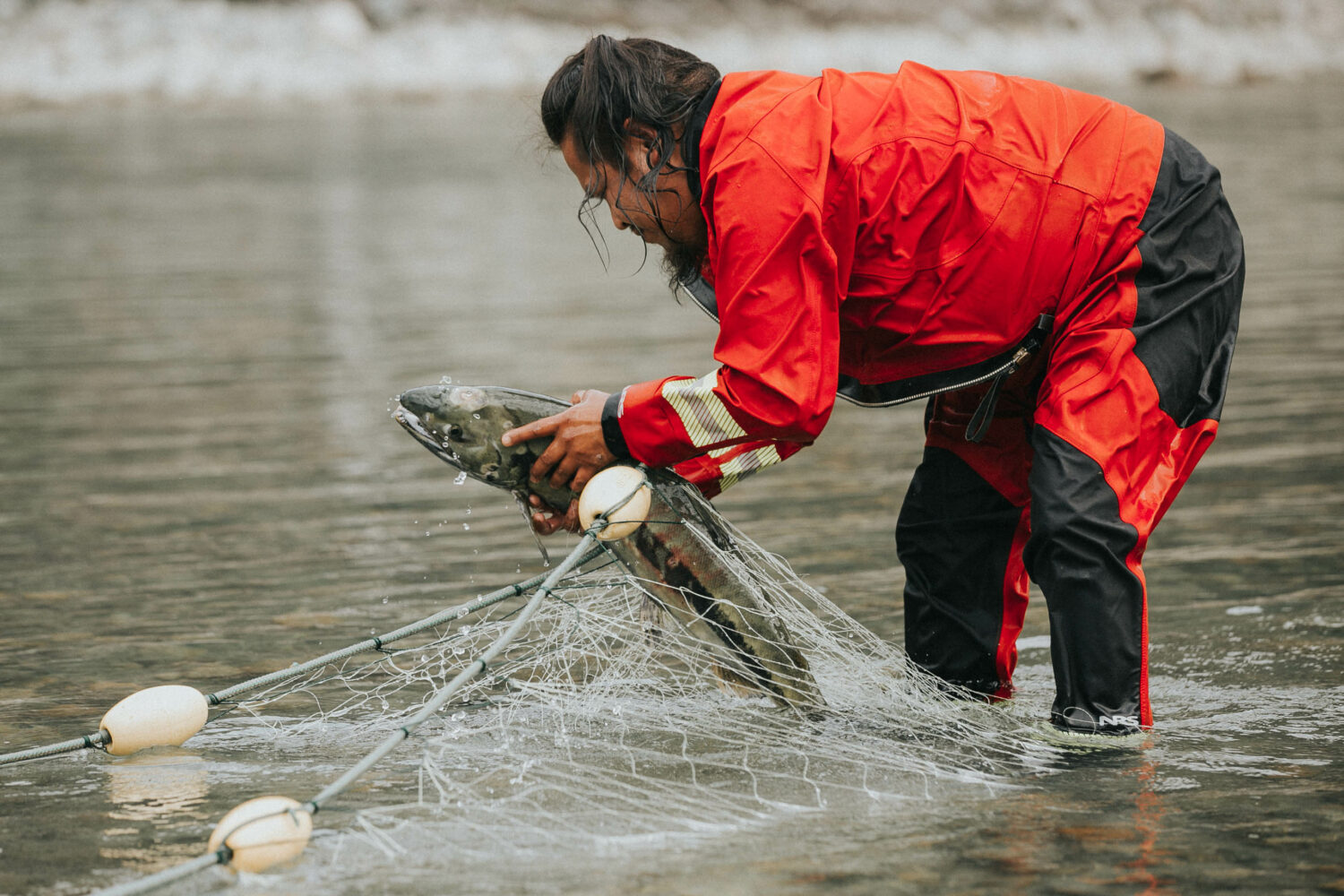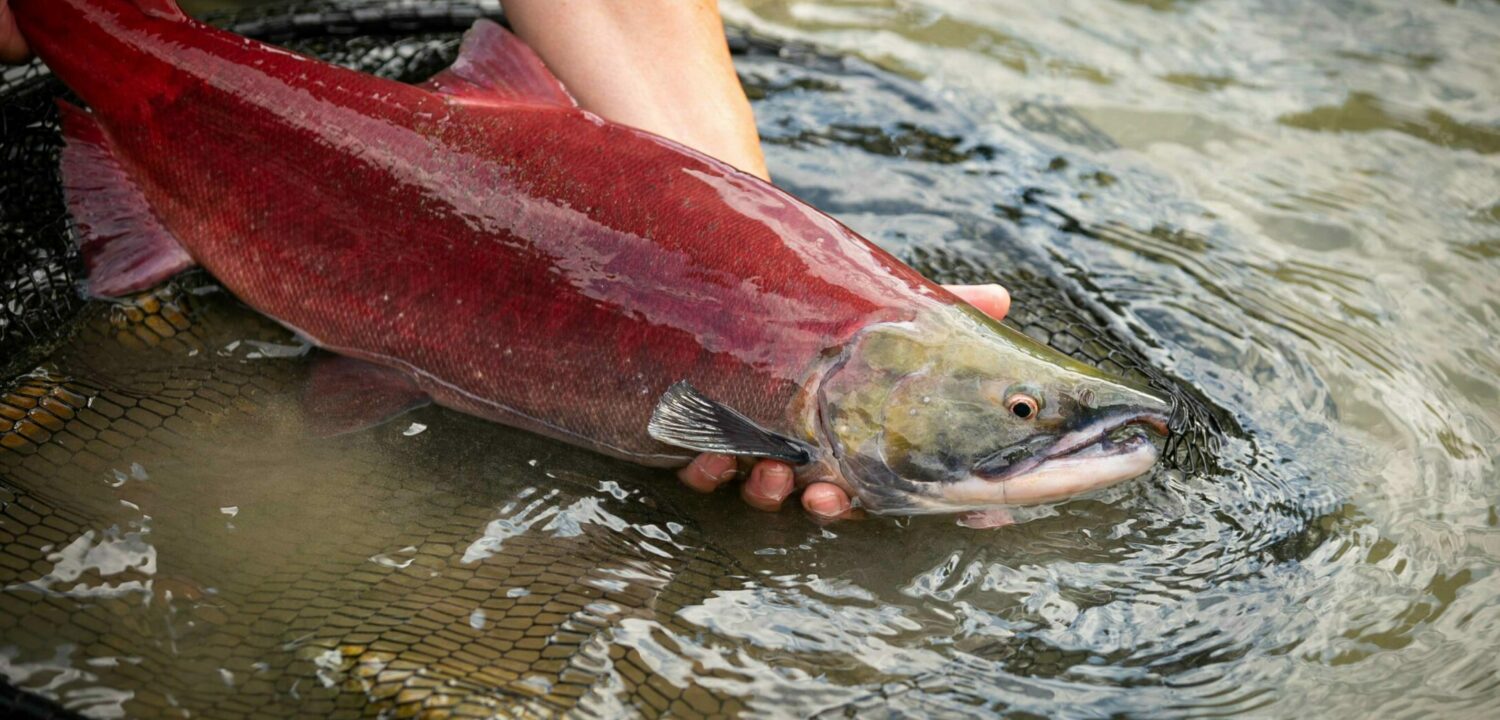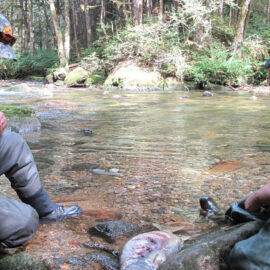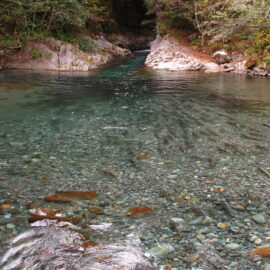Our work to understand genetic characteristics of vulnerable wild fish runs will speed their protection on British Columbia’s Central Coast.
In the language of the Nuxalk First Nation, the place name for the Kimsquit River—“Suts’lhm”—means “place of sockeye.”
So it follows that this remote British Columbia river was a focus of Wild Salmon Center Salmon Watershed Scientist Dr. Will Atlas’s work this summer, collecting sockeye salmon DNA alongside Nuxalk and Heiltsuk First Nations partners.
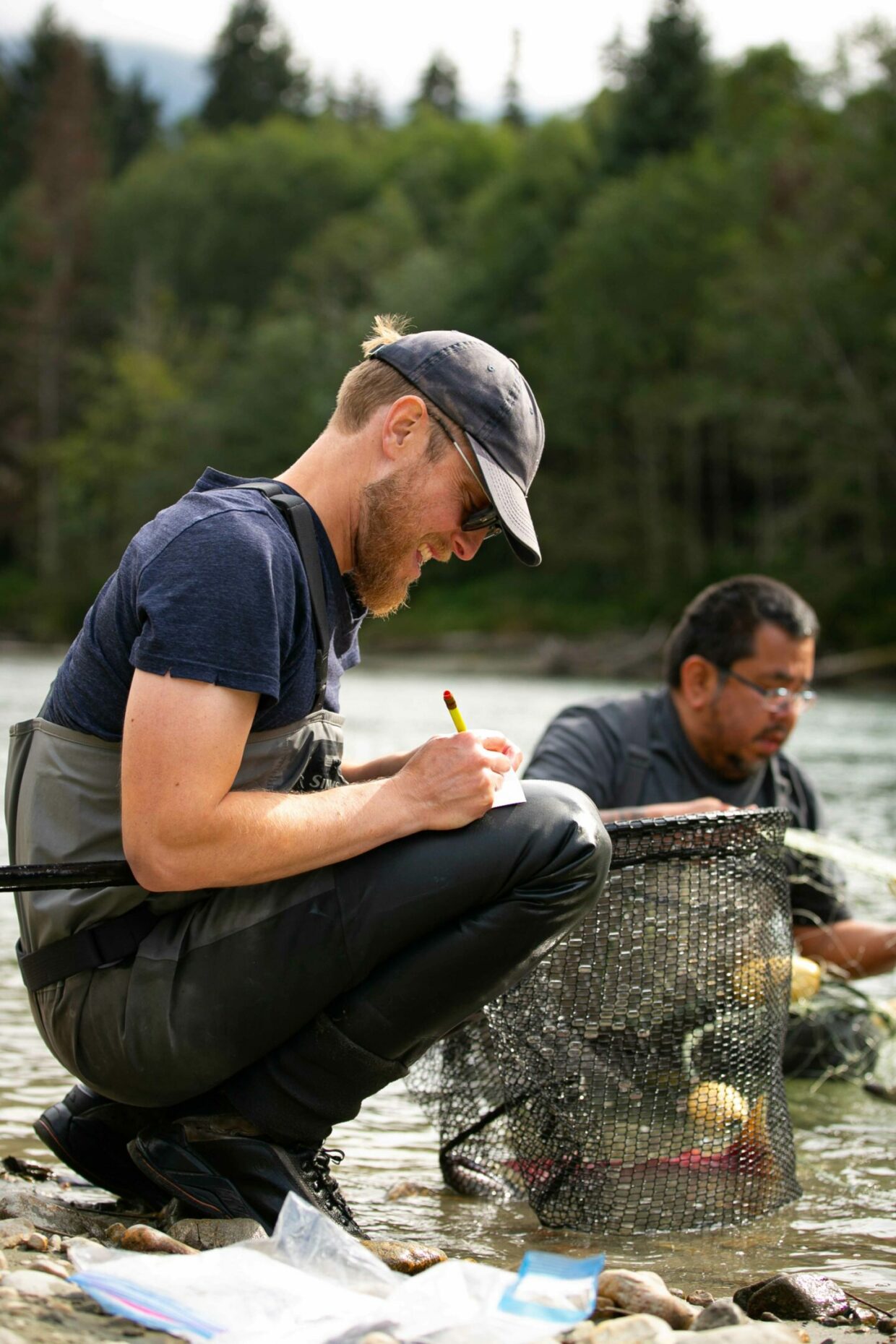
This baseline genetic data is driving a groundbreaking research project co-led by WSC and Simon Fraser University in partnership with Canada’s Department of Fisheries and Oceans (DFO), First Nations partners including the Heiltsuk, Nuxalk, Kitasoo/Xai’Xais, and Lax Kw’alaams First Nations, along with the Coastal Rivers Conservancy.
Now, early findings from this project are revealing rare and understudied runs within B.C. Central Coast rivers like the Kimsquit: findings that support traditional knowledge descriptions of this region’s once-thriving sockeye populations.
The project’s ultimate goal, says Dr. Atlas, is to create a sort of “Rosetta Stone” for sockeye and other wild salmon by merging new and archival data, enabling us to understand these species like never before—what lakes and creeks they come from, how long they’ve spent in the ocean, and other life history characteristics.
“Historically, the Central Coast’s sockeye runs have not been well documented by fishery managers,” Dr. Atlas says. “We simply haven’t known how these fish populations have changed over time, and how they’re making a living now.”
The project’s ultimate goal is to create a sort of “Rosetta Stone” for sockeye and other wild salmon, enabling us to understand these species like never before.
Since the early 1990s, DFO hasn’t maintained counts for these populations: one of several factors contributing to a widening data gap that tracks with the sharp decline of the region’s commercial sockeye fisheries. But for Central Coast First Nations, for whom sockeye has long been a key food source and central to cultural identity, it’s long past time to elevate the visibility of this foundational species.
“Without knowing more about the life histories now playing out in these isolated rivers and lakes, recovery efforts for Central Coast sockeye are just shots in the dark,” Dr. Atlas says.
To fill these critical data gaps, the team’s researchers are drawing from the rapidly expanding toolkit of modern genetic science to pinpoint the number of unique sockeye populations in Central Coast watersheds, along with their migration routes and run timing.
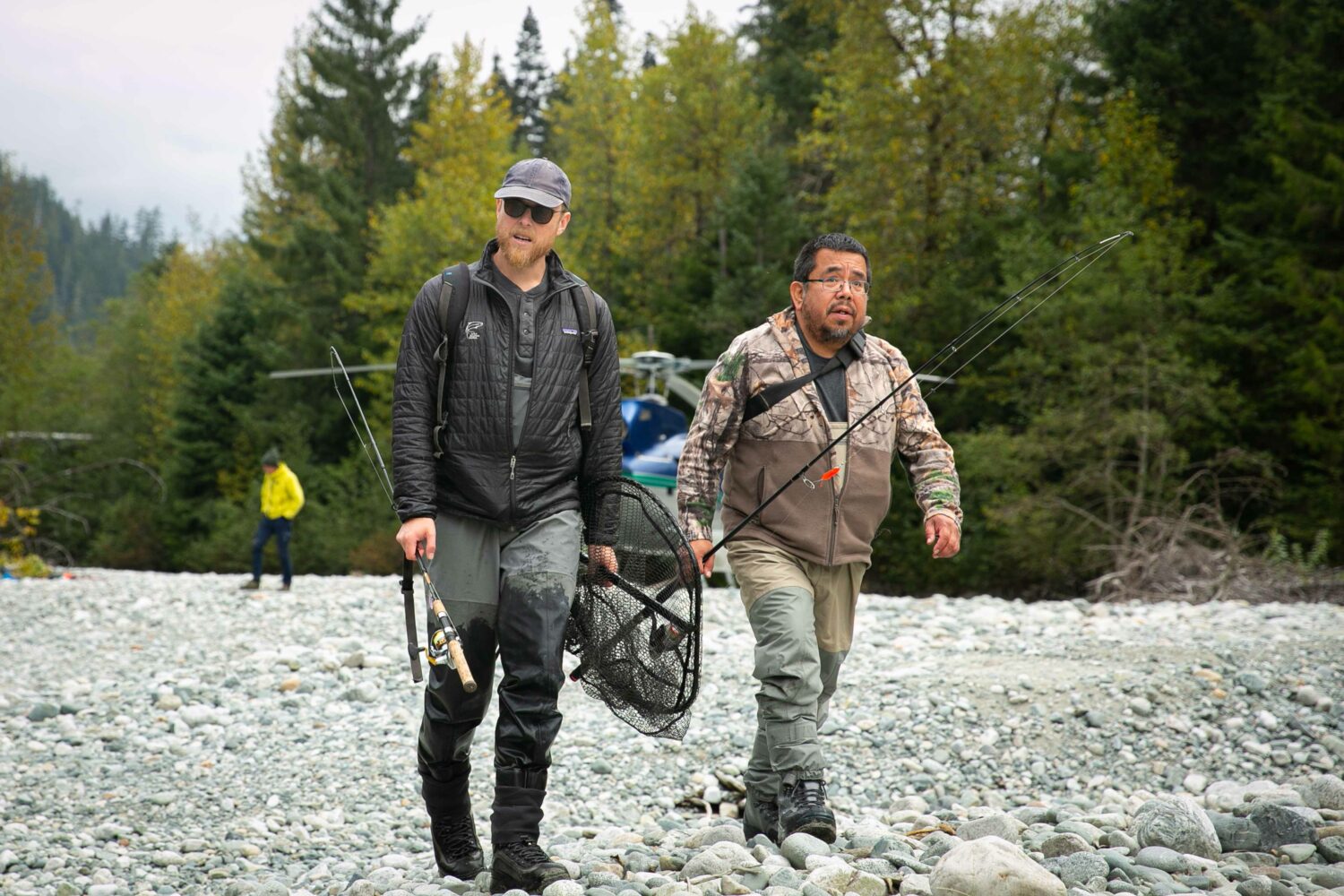
These powerful new insights could show how sockeye are adapting to changing conditions in these watersheds. They could also help fisheries managers develop more selective guidelines for mixed-stock fisheries, where vulnerable sockeye runs might overlap with target harvest species.
The team’s researchers are drawing from the rapidly expanding toolkit of modern genetic science.
WSC and our project partners launched this project in 2021, thanks to a grant from Genome BC’s GeneSolve program. This summer, field researchers received a welcome boost from unusually strong sockeye returns: unexpected abundance that helped us reach sampling thresholds of approximately 50 individuals from 118 unique sockeye runs spanning B.C.’s North and Central Coasts.
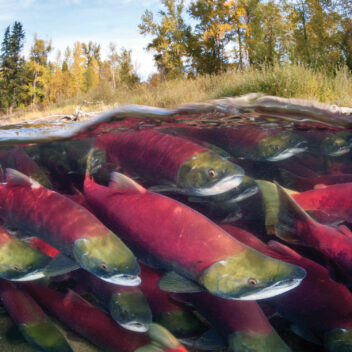
Now, with data collection near completion, Dr. Atlas and his team are entering an exciting new project phase: analysis and interpretation.
Among the compelling early revelations is evidence of several river-type sockeye populations spawning in large numbers in areas of the Kimsquit, Kwatna, and Atnarko Rivers that lack an adjoining rearing lake.
It’s an exciting finding, Dr. Atlas explains, because this river-type life history has only sporadically been documented in the past. Typically, sockeye spawn in close proximity to a rearing lake, where juveniles will spend a year or two growing before migrating to sea. These populations defy that pattern, and comprise a distinct and uniquely important component of sockeye life history diversity on the Central Coast.
“First Nations here always knew there were these unique sockeye runs,” Dr. Atlas says. “But now we have the receipts. We’re learning that the Central Coast is still supporting an astonishing level of biodiversity and behaviors.”
“We’re learning that the Central Coast is still supporting an astonishing level of biodiversity and behaviors.”
WSC Salmon Watershed Scientist Dr. Will Atlas
For salmon populations, life history diversity is a survival strategy: a wealth of hedges and pivots that allow the overall species to adapt to changing conditions. The fact that Central Coast sockeye are maintaining biodiversity even as overall numbers decline means that they’re well-positioned for recovery —if we give them room to do so.
“What we’re learning about Central Coast sockeye diversity is really exciting,” Dr. Atlas says. “It’s possible that our research can help enable a level of precision in fisheries management and recovery planning decisions that wasn’t previously possible. And that gives us a lot of hope.”
The fact that Central Coast sockeye are maintaining biodiversity means that they’re well-positioned for recovery—if we give them room to do so.
